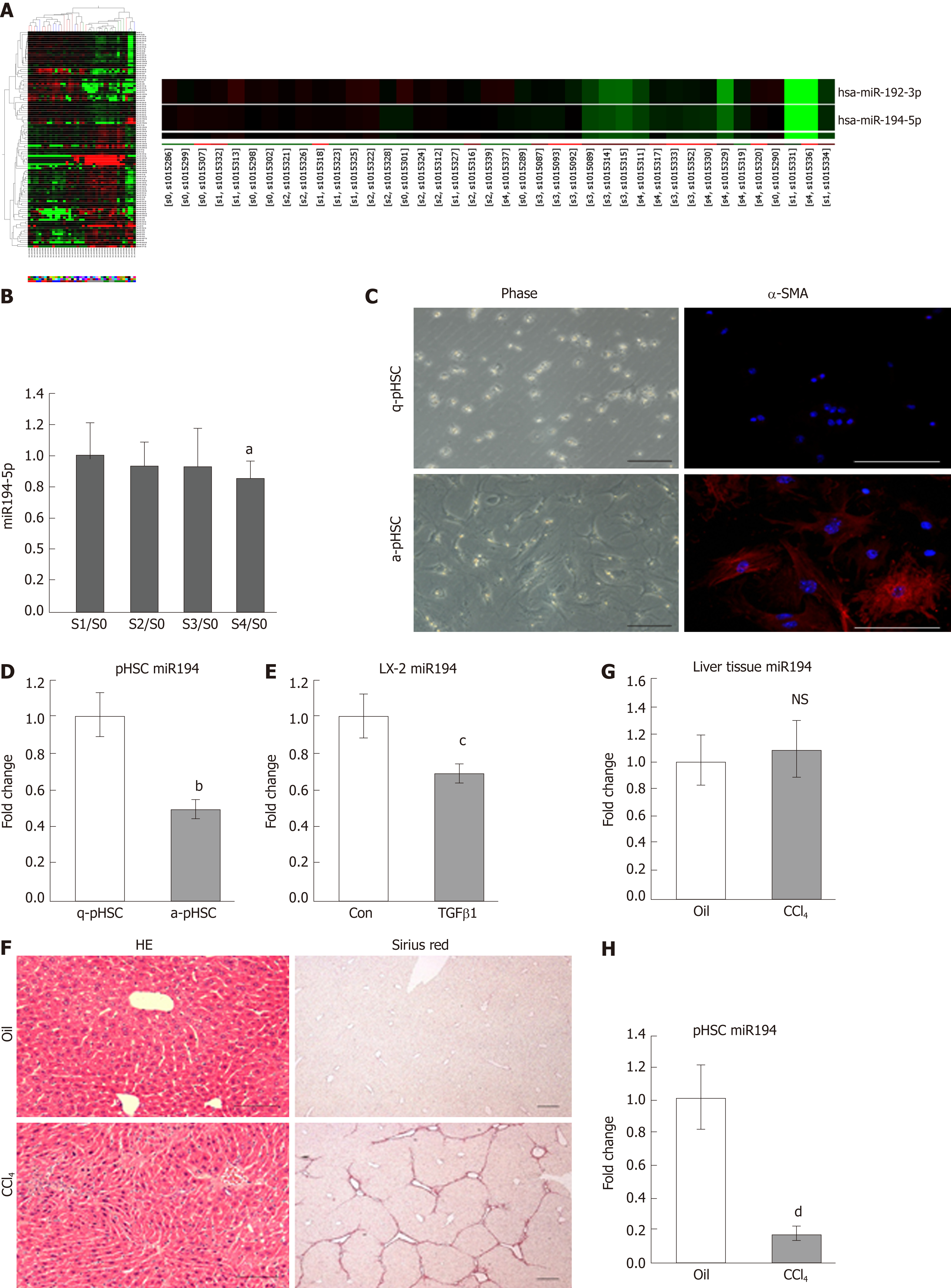Copyright
©The Author(s) 2019.
World J Gastroenterol. Aug 21, 2019; 25(31): 4468-4480
Published online Aug 21, 2019. doi: 10.3748/wjg.v25.i31.4468
Published online Aug 21, 2019. doi: 10.3748/wjg.v25.i31.4468
Figure 1 MiR-194 is downregulated in activated hepatic stellate cells from humans and mice.
A: Heatmaps of the microRNA microarray analysis results in the liver of CHB patients; B: The expression of miR-194 measured by qPCR in the liver of CHB patients; C: Morphological and IF images of q-pHSC/a-pHSC. Bar = 100 μm; D: The expression of miR-194 determined by qPCR in pHSCs; E: The expression of miR-194 determined by qPCR in LX2 cells; F: H&E and Sirius Red staining images used to evaluate liver inflammation and fibrosis in CCl4-treated mice. Bar = 100 μm; G: The expression of miR-194 measured by qPCR in liver tissue; H: The expression of miR-194 measured by qPCR in pHSCs isolated from oil- and CCl4-treated mice. aP < 0.05 vs the S0 group; bP < 0.05 vs the q-HSC group; cP < 0.05 vs the con group; dP < 0.05 vs the Oil group. CHB: Chronic hepatitis B; pHSCs: Primary hepatic stellate cells; H&E: Hematoxylin and eosin; CCl4: Carbon tetrachloride.
- Citation: Wu JC, Chen R, Luo X, Li ZH, Luo SZ, Xu MY. MicroRNA-194 inactivates hepatic stellate cells and alleviates liver fibrosis by inhibiting AKT2. World J Gastroenterol 2019; 25(31): 4468-4480
- URL: https://www.wjgnet.com/1007-9327/full/v25/i31/4468.htm
- DOI: https://dx.doi.org/10.3748/wjg.v25.i31.4468









